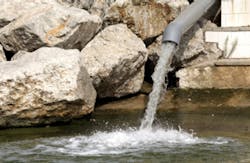LOS ANGELES — Xylem will use its technology to help the City of Los Angeles Terminal Island Water Reclamation Plant comply with the state’s groundwater recharge regulations for indirect potable reuse, according to a press release.
The project will help increase the region’s supply of purified, recycled water, noted the release. The state’s water board requires urban areas to reduce water usage by 25 percent.
Xylem’s process will act as a final barrier to pathogens and contaminants not removed by other technologies, stated the release. Microfiltration and reverse osmosis will be used before Xylem’s method.
The Terminal Island Water Reclamation Plant treats wastewater from nearby businesses and residents to recharge drinking water aquifers, reported the release. The water protects groundwater against seawater intrusion.
“This application of UV with chlorine as an [advanced oxidation process (AOP)] is a significant breakthrough in treatment to make water reuse more sustainable and cost-effective,” said Keel Robinson, North America Water Reuse Leader for Xylem, in the release. “The use of UV with chlorine for AOP will enable the Terminal Island Water Reclamation Plant to utilize their existing chlorination facility without having to add any new chemicals, and it will significantly reduce the life cycle cost relative to the other types of AOP, such as UV with hydrogen peroxide.”
Xylem will also supply the plant with a system to aid in the performance of its wastewater biological treatment system, shared the release. It is designed to reduce energy costs and improve water quality.
Click here to read the entire release.
